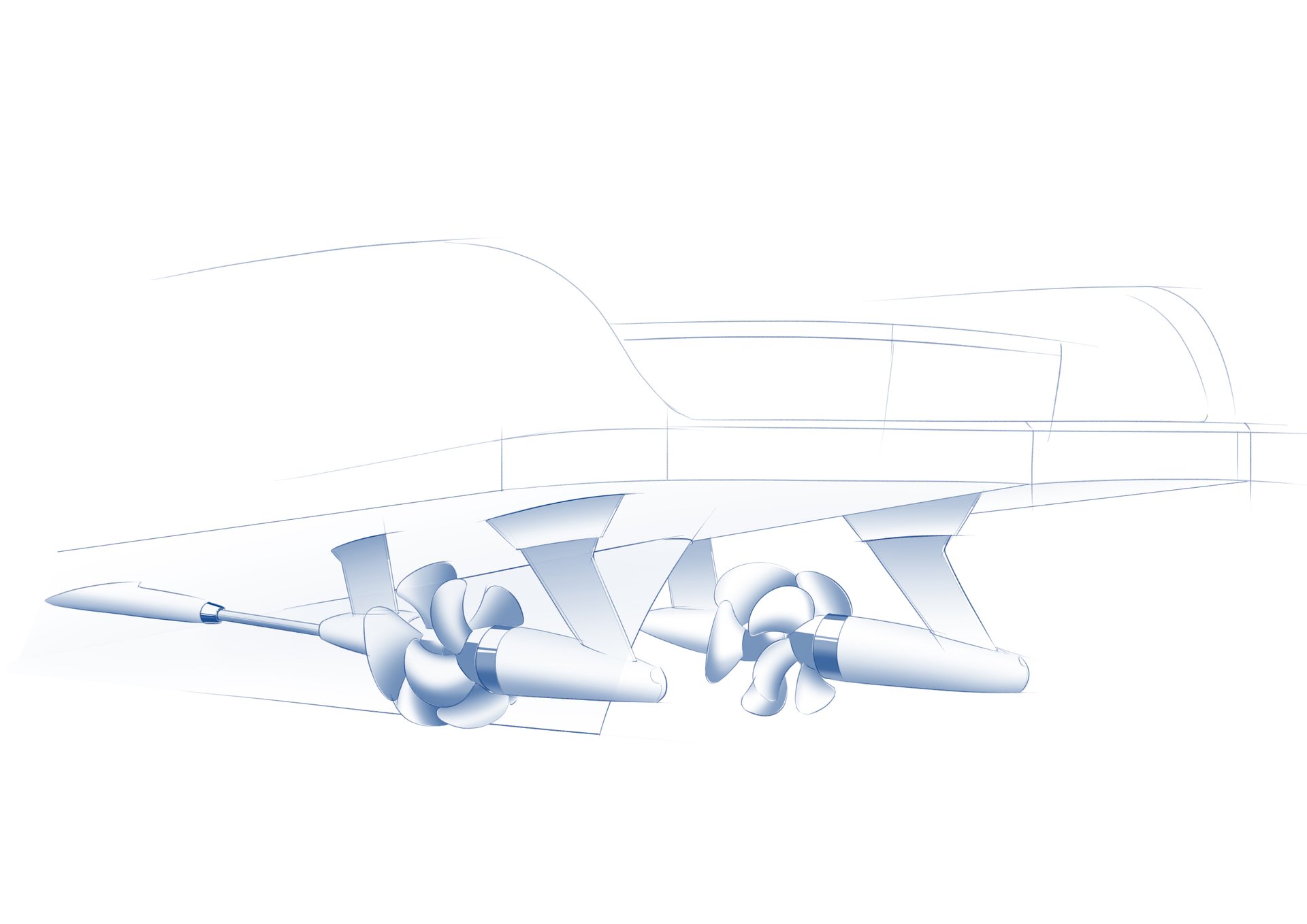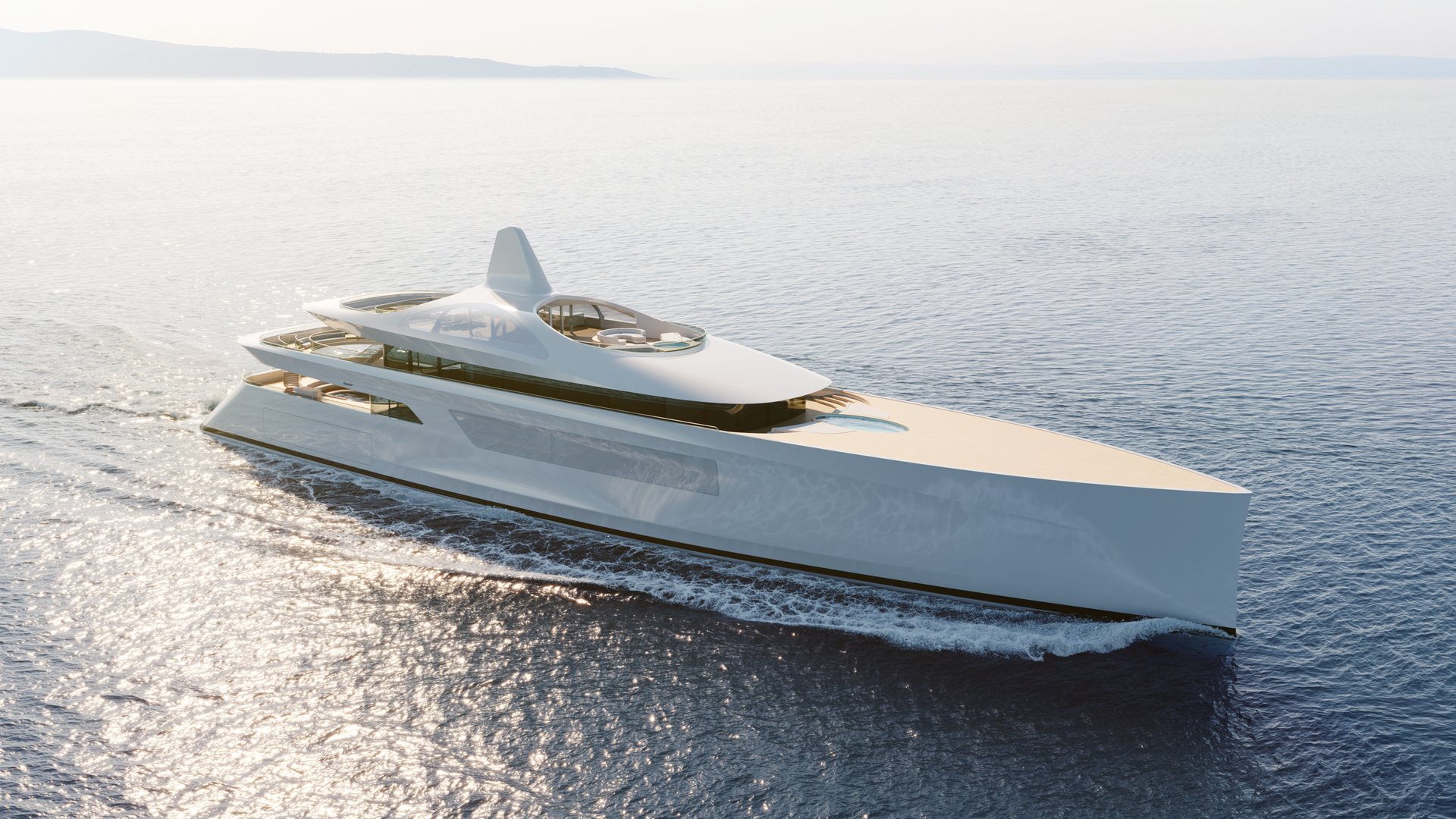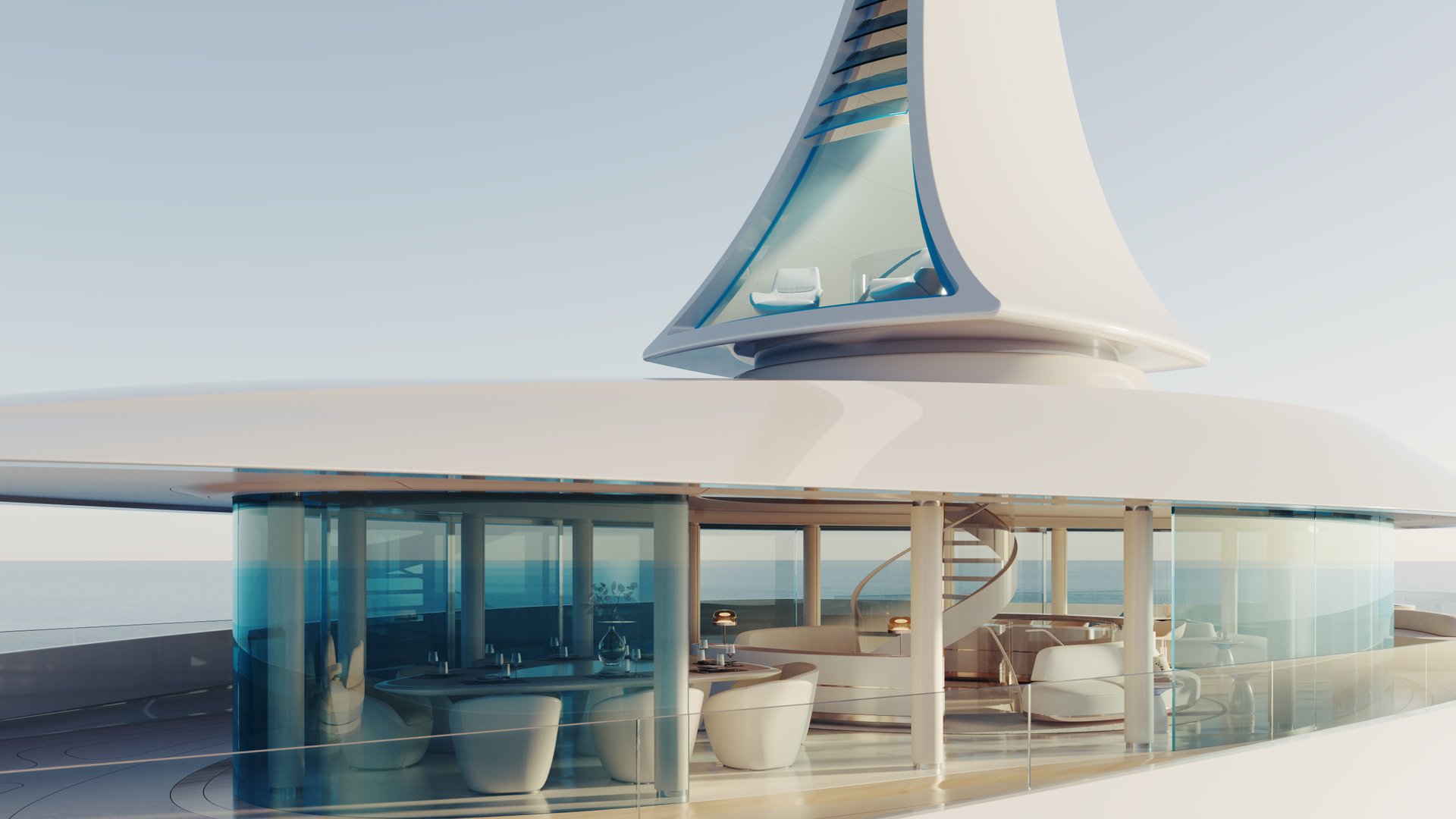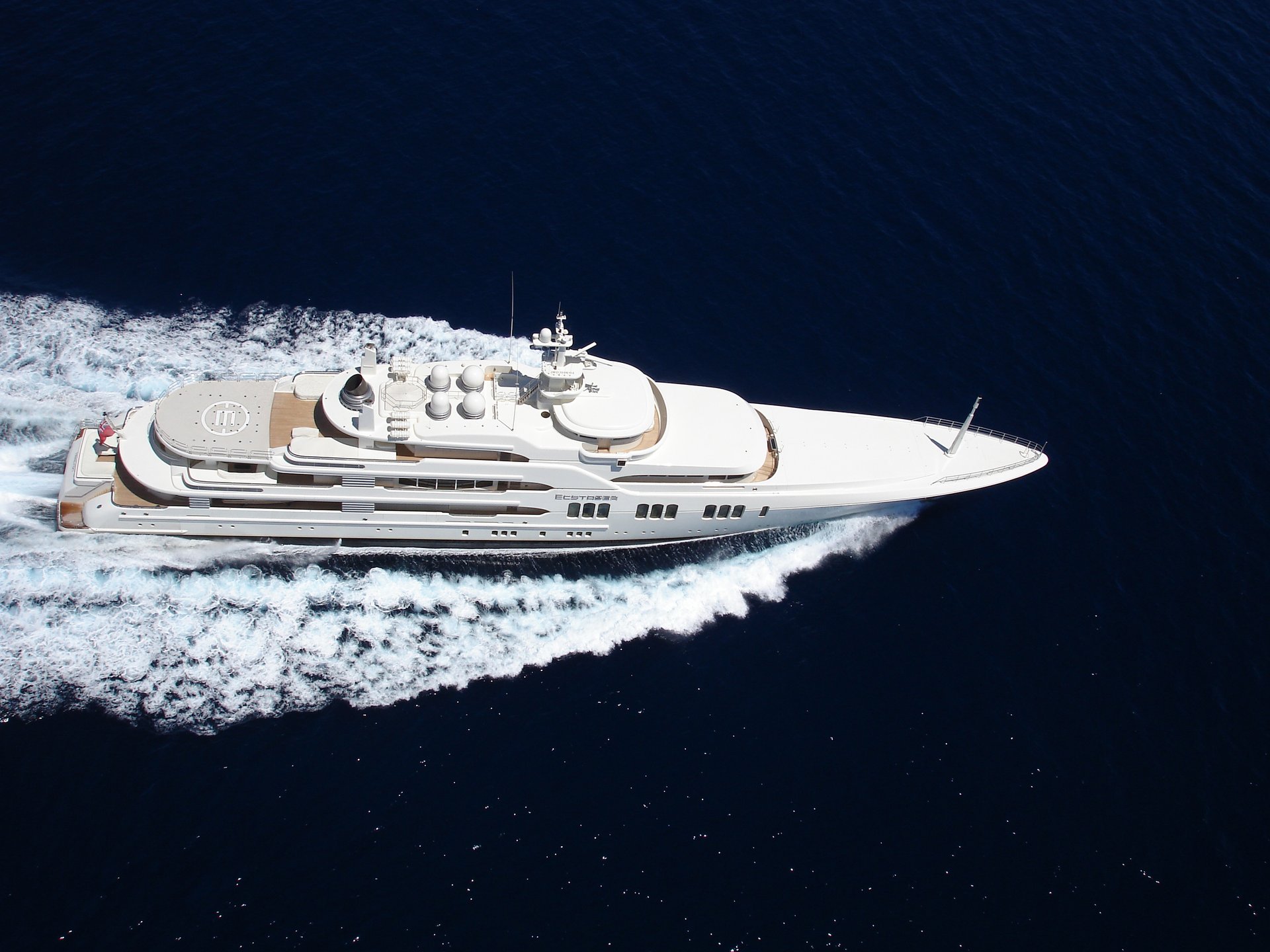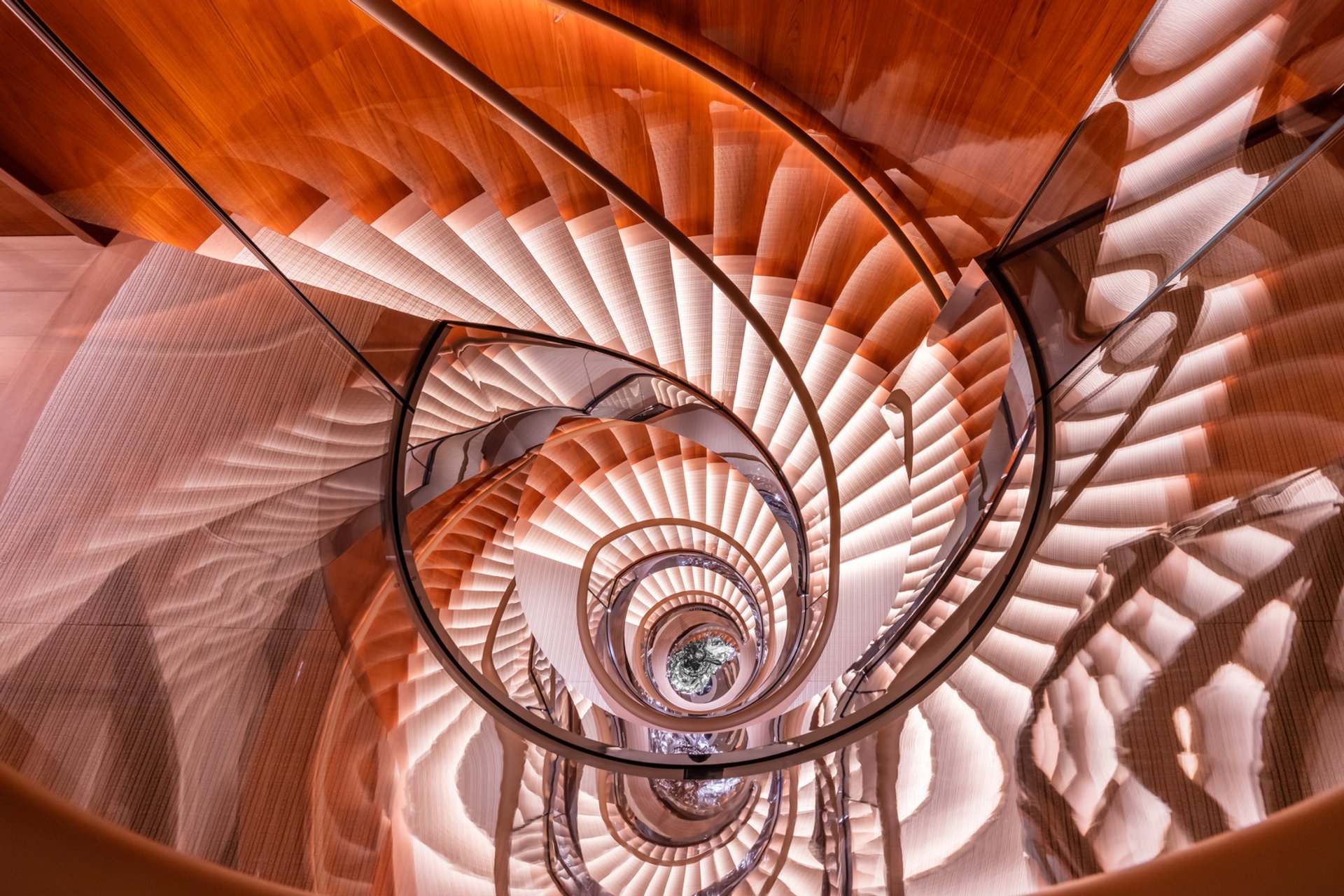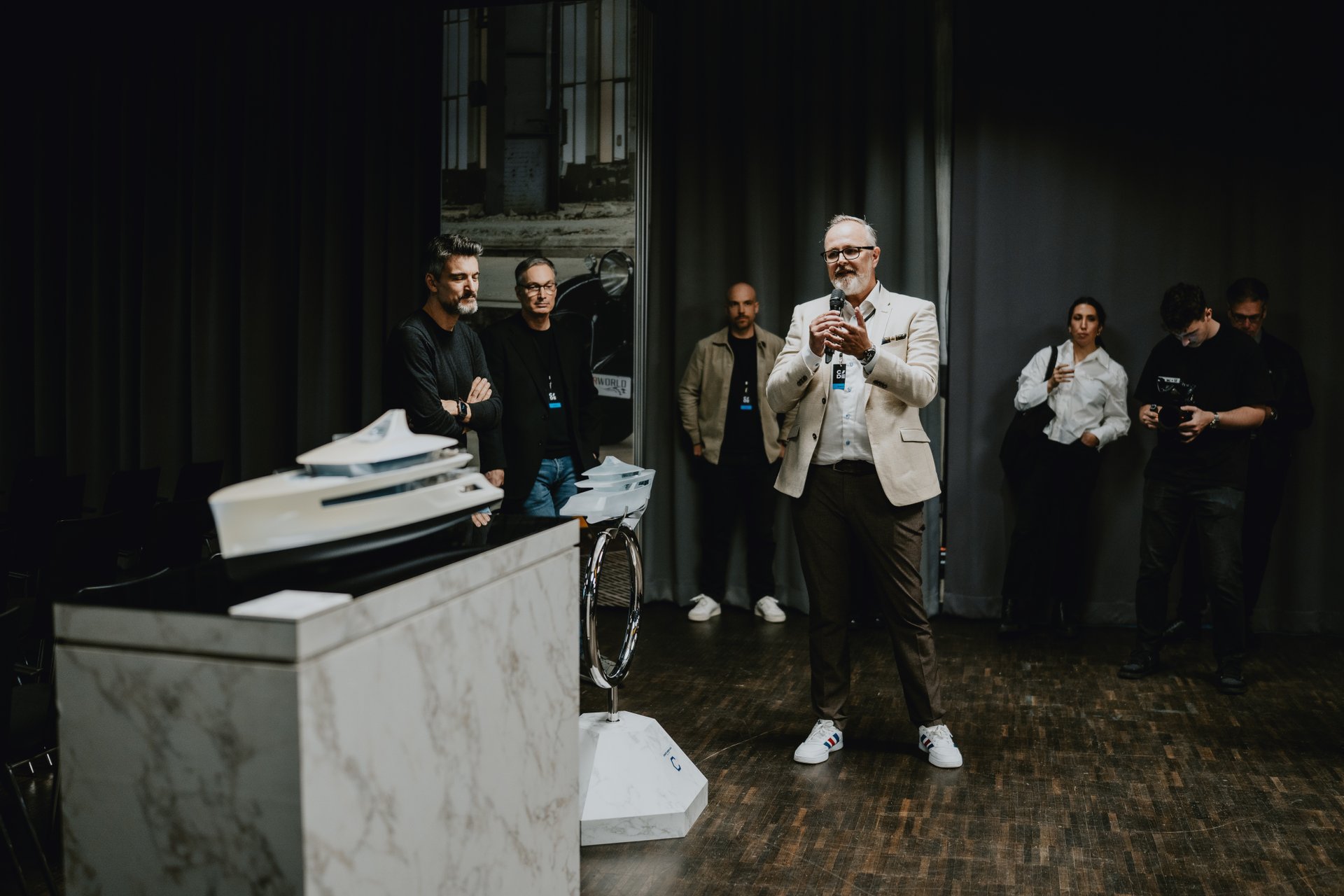A wise yacht designer once said that by the time something has become a trend, it is already mainstream. Indeed, emerging trends in superyacht design are hard to spot in an ever-shifting generational, demographic, environmental and technological world. Nonetheless, Feadship carefully monitors all influences in order to stay ahead of the game.
Client-Driven innovation
There are people better qualified than me to tell you about the lifestyle trends that will influence our yacht designs of the future. But what I do know is that it’s usually our clients that are pushing the envelope, and we can get a good idea of that if we to look into the past.
Let's take the example of Feadship Al Riyadh delivered in 1978. The yacht had a swimming pool sunk into the top deck and the owner suggested putting windows in the sides of the pool. These brought light into the lounge below and, of course, guests could see into the pool. Fast forward fifty years to 2017, and that pool concept has developed into the spectacular glass-bottomed swimming pool measuring 9 by 3.6 metres on Faith.
Then there are all the tenders and water toys carried aboard today’s yachts. Yachts were once a lot smaller and the yacht was the toy, so to speak. Clients now expect an array of other personal watercraft, shadow vessels and even amphibious vehicles.
The same is true of the onboard entertainment, which in the case of 60-metre Méduse (1996) involves 73 kilometres of wiring and fibre optics, a boat deck sports bar that doubles as a recording studio, an audio-visual multimedia centre, and a sensational cinema designed by Hollywood experts.
The owner-driven desire to explore the world means all Feadships are designed to cross entire oceans in safety and comfort, but it has also influenced the exterior design of our yachts. This is clearly seen in the explore-style profile of 55-metre Shinkai that is able to travel the world while remaining both self-sufficient and fuel-efficient.
Sustainability counts
But perhaps the most far-reaching trend of all – and the one that is evolving the fastest – is sustainability. It’s the word on everybody’s lips. The superyacht industry has not always been quick to promote its green credentials, but Feadship is certainly making up for lost time by pursuing new avenues to protect and preserve the ocean environment.
Indeed, the whole rationale behind the 81.75-metre Pure concept is to explore what would happen if we developed a yacht that blended the immense experience gained from working for owners with the boldest visions that have yet to see the light of day. The result is a Feadship with groundbreaking aesthetics ready for next-generation operation with clean propulsion based on a flexible hybrid fuel system that will ultimately mature into fuel-cell capability by the end of the decade.
“Today the millennials, the generation between 20 to 43 years old, and the Generation Z, those who are 20 to 23 years old, cannot be ignored,” says Eva Ng Kon Tia, a brand strategist and storyteller who asserts that 130 per cent of the growth in the luxury market will be driven by those generations in the next seven years. “As a brand strategist, I look at those generations not only because of their weight in purchasing power, but also because they are the ones that will drive those changes in terms of using and adapting technologies to enable the vision of a world that is more in tune with their personal values.”
Studying these generations enables companies to stay relevant and build longevity as a brand by identifying new products, new services and new opportunities, as well as evolving new brand strategies. Both generations are very digital and tech savvy, which is reflected in the change in work-life balance by which the boundaries between office and living spaces are much more fluid. This was already a trend before Covid 19, but the pandemic and the need to work remotely from home accelerated the process.
The human factor
“We have the digital world coming in very strongly, but we still long for the human touch or the intimacy of being together and experiencing something,” says Pedro Sjøblom Tavares, an architect and project manager at Snøhetta, a transdisciplinary architecture firm in Oslo. Tavaras points to the Apple stores, which have evolved from being avantgarde showrooms for displaying high-tech products to being about more gathering and experiencing the brand together.
This balancing of the digital world with the human factor – another consequence of social distancing during the pandemic – is a priority for Francesca Muzio, designer and co-founder of FM Architettura in Italy: “I think young people today want a more tactile environment, which runs deeper than just materials, fabrics and finishes,” she says. “These new generations like to take care of both their bodies and their minds and are willing to invest more in personal well-being.”
Muzio further sees a revival of ‘design nostalgia’ among young people, reflected in the newfound popularity of vinyl records and vintage furniture, for example. In part, this is related to the desire for timeless and less complicated design that makes our lives easier. In fact, Muzio believes in the future ‘luxury’ will be more about simplifying choices. Digital technology is still very much present in their lives, but it is often disguised in a more analog format. This is a significant development for the refit sector, because it potentially regards a refitted yacht less as a pre-owned product and more as a desirable object worth collecting.
Yachts today are used differently than they were in the past and this is already affecting their general arrangements. “The main saloon, for example, was a space was inspired by the cruise liners crossing the Atlantic for weeks at a time and was the main place for socialising,” says Tavares. “But today socialising is something you can also do online from anywhere on the yacht.”
Is there a danger that the proliferation of digital technology will inhibit human interaction on board? Eva Ng Kon Tia thinks not. “I think smart technologies can support the way we live and enable our values,” she says. “This is something we saw during the Covid lockdowns when we realised that technology can actually bring people together even when we’re forced to be apart.”
Heart of glass
One of the biggest developments in recent years is the evolution of glass as a structural material on yachts: “Over the last ten years, we've seen a trend to adopt ever higher performing glass in terms of limiting the solar gain,” says Ian Langham, a director at Eckersley O’Callaghan, a specialist glass engineering and architecture practice in the UK. “At the same time, there's been a trend for maximising the transparency, so we can better connect owners to the surrounding land or seascapes.”
These dual trends have created a conundrum for yachtbuilders in that the challenge is about finding the sweet spot between visibility and light while still inhibiting the transfer of solar heat that drives up the energy consumption for air conditioning. Achieving this sweet spot requires in-depth understanding of glass engineering and manufacturing techniques.
“If you look back to Feadship yachts in the 1960s, only about seven per cent of their profile area was glass,” says Bram Jongepier, senior design specialist at De Voogt Naval Architects. “That has grown to 30 per cent or more today because we now use structural glass by integrating its physical properties into the construction of the yacht.”
This is no simple task and Feadship first threw a lot of science at the subject before destruction testing of up to twenty full-size panes of 30mm glass. The engineering challenge is even more pronounced when it comes to glass swimming pools and the shipyard worked closely with Eckersley O’Callaghan on Faith to develop an entire glass system that can deal with the hull movements, while keeping all the visible connections and joints down to an absolute minimum.
Holes in hulls
Like pools, the proliferation of opening hatches and platforms is another trend that has occupied the engineers at Feadship. Ten years ago, a folding transom platform was still a novelty. Not anymore and Feadship is currently building a yacht with 29 sliding, folding or hinging structures on board. Many of these features require large perforations or holes in the hull.
“We’re basically building a very big Swiss cheese!” says Bram Jongepier. “That has an impact on the construction, of course. All those holes can adversely affect rigidity, which can lead to deformations and vibrations. To prevent that we’ve developed an in-house method at Feadship to assess the required rigidity at a very early stage in the design to make absolutely sure that it complies with our standards, which are usually more stringent than what Class is asking for.”
A stand-out example of this in-house method in action is 78-metre Venus (2012), which despite her all-aluminium construction and some of the biggest windows ever fitted on a superyacht, is actually stiffer than many of her steel counterparts.
“It's all about analytics,” concludes Farouk Nefzi, chief marketing officer at Feadship. “Analytics is absorbing all the innovation and emerging trends and translating that data into applicability and buildability. We’re able to create very complex yachts to the highest quality standards largely thanks to the collective know-how of our workforce at Feadship, who are able to translate all that data into dreams.”
